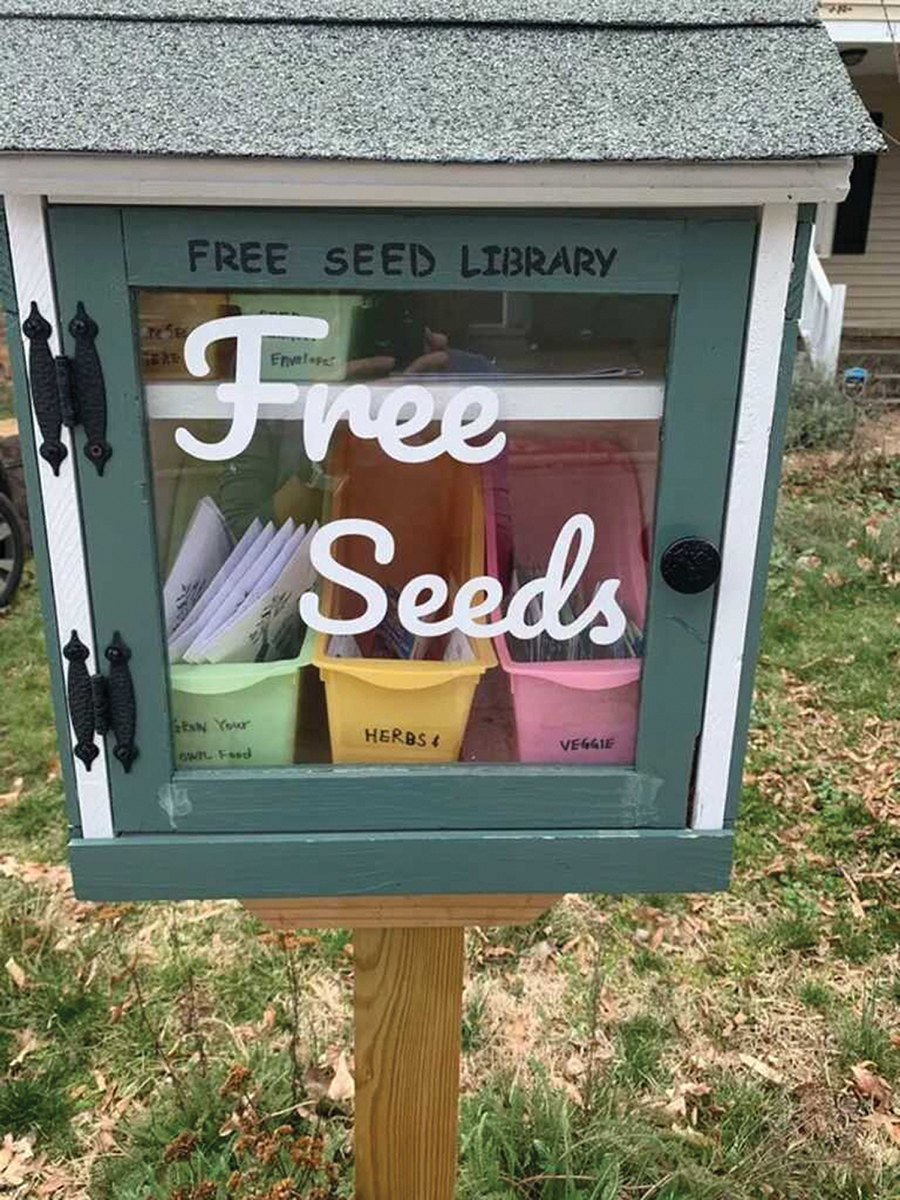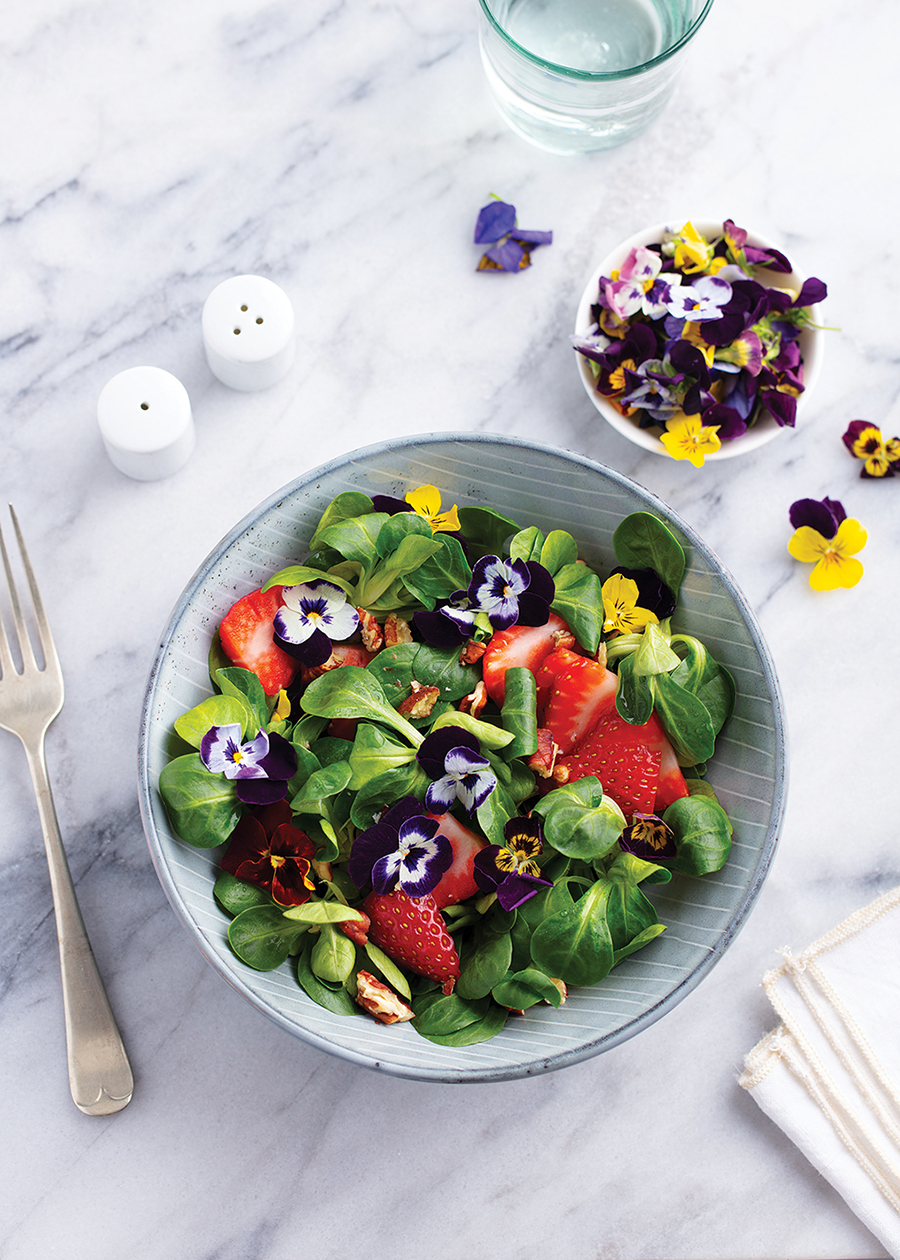Sazerac May 2023

Free Seeds! Can You Dig It?

Long before the freestanding Little Seed Libraries began appearing in neighborhoods, public libraries were on the bandwagon, distributing seeds alongside books.
Since 2018, Greensboro’s Glenwood Library has sponsored a free seed exchange and informational program. (Library patrons are encouraged to plant their seeds and resupply the library’s after harvesting their own — everything from marigolds to zinnias — and assorted vegetables.)
Now a neat hybrid called Little Seed Libraries has taken root. The free seeds and exchange program emulates the popular concept of neighborhood-based Little Free Libraries (now with 150,000 registered locations).
On Parish Street in northwest Greensboro, a dark green box on a post, fetchingly embellished with Free Seeds, has resident Mallory Cutsor excitedly praising the idea on NextDoor, a social media site. Cutsor who lives nearby, checked out a generous variety of herb, flower and vegetable seeds free for the taking. (Seed exchanges are encouraged.)
In early March, her 4-year-old son started the seeds they had selected, she says.
Among the offerings were snap peas, kale, lettuce, spinach, rocket and various herbs, plus hardy flowers such as zinnia, sunflowers and cosmos. The seed library was helpfully stocked with free planting calendars, offering planting tips and number of days to harvest. The Parish Street Little Seed Library is possibly Greensboro’s first. Only five years ago, there were an estimated 660 seed libraries in 48 states, the majority housed in universities, ecology programs and public libraries. Today’s estimates are far higher, rising in tandem with community gardens — as gardening surged among the pandemic home-bound. The free seeds concept promotes urban gardening and aids pollinators — providing green scenes for neighborhoods everywhere. — Cynthia Adams
Window to the Past

Photograph © Greensboro History Museum
Mayor, Mayor, how does your garden grow? Former Mayor Paul Lindley (1877–1933) grew his garden in manicured rows featuring boxwoods, flowers and statuary.
Sage Gardener

The first time I was served edible flower buds was in an oh-so upscale, chichi Charlotte eatery that I was reviewing for our sister pub, Business North Carolina. “Nasturtiums,” my wife, Anne, said, spearing a bloom with a bit of lettuce from her salad and gobbling it down. I wrinkled my nose and said something like “Who eats flowers?” “You,” she shot back, “as in cauliflower and broccoli, not to mention the squash blossoms I stuff with cheese and deep-fat fry for you.” Shut my mouth — as usual. A former Latin teacher and something of a Medievalist, Anne entertained our table guests with how, for centuries, flowers have been used not just as garnishes, but candied and crystalized; infused, as in rosewater and vinegars; “and how about capers?” she added. “What would eggplant caponata be without flowers?” Then there are tisanes and various teas made with flowers, from chamomile to lemon balm. But back to the 21st century and your garden, which I trust is under way. Got pansies, violets, calendulas, lavender, hyssop, sage, borage, chives, cornflowers and thyme planted? (Ever used thyme flowers in your green-olive tapenade?) You might want to check out whatscookingamerica.net/edibleflowers for an exhaustive list of what plants and parts of plants you can eat — and some important cautionary notes on what to not eat if you have a will to live. Don’t have a garden? Other than artichokes in Italian spots, I don’t know of any chic boîtes featuring flowers with their haute cuisine. You might just have to settle for Outback’s blooming onions. — David Claude Bailey
Just One Thing

“Our sculptures are inspired by the archaeology of great civilizations,” say the brothers Caviness — Bryan with a B.F.A. from NCSU and Brad with a B.F.A. from UNCG. From their studio in Browns Summit, they create — and then carefully break — replicas of pottery that are contemporary with the scenes they depict. “The shattered clay symbolizes the destruction of great sites,” they explain, like the ruins of the Erechtheion atop Athen’s Acropolis. Within a classic black-figured amphora seemingly ravaged by the ages, the pillared statues of the caryatids (or virgins) stare serenely out over Athens’ ancient cityscape. Their work, they hope, creates “a compelling contrast between beauty and brokenness” in hopes of sparking preservation and restoration. (Note to the British Museum: The lone caryatid that Lord Elgin looted and is in your collection would like to join her sisters in Greece.) The caryatid vase and a number of others — including depictions of Cordoba, Spain, the Karnak Temple, Egypt and the old city of Jerusalem — rotate in and out of Ambleside Gallery in downtown Greensboro. Info: amblesidearts.com.
Unsolicited Advice

Wondering what a mom wants, what a mom needs? Well, Christina, a genie in a bottle would be amazing, but we’ll settle for not getting rubbed the wrong way just for one day. And there is one way you can make that happen for your mom on this Mother’s Day. How would we know? Let’s just say we’re hoping the father of our children is reading this right now because it’s the only item on our list: a day at home alone.
And what would we do with a glorious day in our own house, all by our not-so-lonesome?
Sip morning coffee in silence. Do you hear that? Aaaah, neither do we.
Go to the bathroom whenever we want without any little fingers poking underneath the door, accompanied by whines of “Mommmmmy, are you almost done?”
Blast Whitney Houston while singing into a hairbrush and dancing around the halls like Hugh Grant in Love Actually.
Eat a nutritious midday meal at an enjoyable pace as opposed to wolfing down the discarded crusts of PB&J and calling it lunch.
Miss our kids. Dammit.
